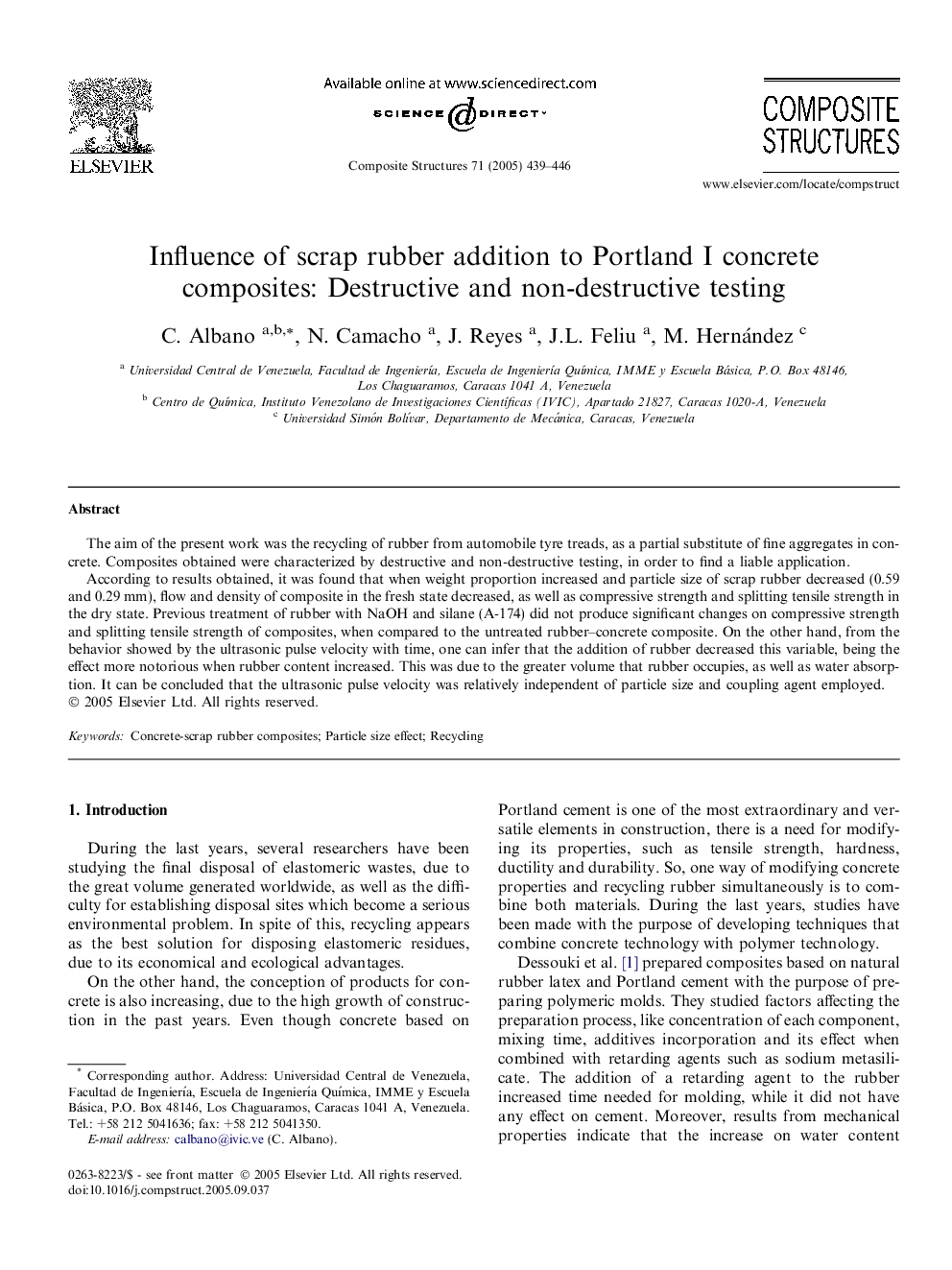| Article ID | Journal | Published Year | Pages | File Type |
|---|---|---|---|---|
| 9637788 | Composite Structures | 2005 | 8 Pages |
Abstract
According to results obtained, it was found that when weight proportion increased and particle size of scrap rubber decreased (0.59 and 0.29Â mm), flow and density of composite in the fresh state decreased, as well as compressive strength and splitting tensile strength in the dry state. Previous treatment of rubber with NaOH and silane (A-174) did not produce significant changes on compressive strength and splitting tensile strength of composites, when compared to the untreated rubber-concrete composite. On the other hand, from the behavior showed by the ultrasonic pulse velocity with time, one can infer that the addition of rubber decreased this variable, being the effect more notorious when rubber content increased. This was due to the greater volume that rubber occupies, as well as water absorption. It can be concluded that the ultrasonic pulse velocity was relatively independent of particle size and coupling agent employed.
Keywords
Related Topics
Physical Sciences and Engineering
Engineering
Civil and Structural Engineering
Authors
C. Albano, N. Camacho, J. Reyes, J.L. Feliu, M. Hernández,
